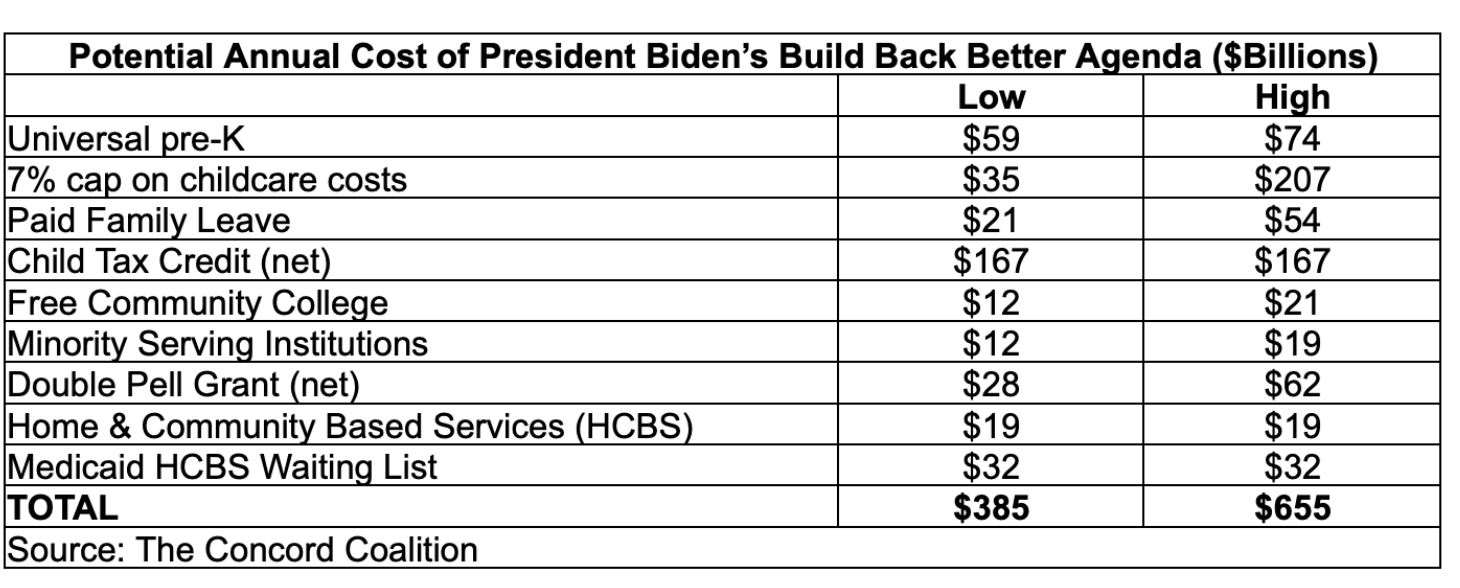As Democrats in Congress continue to meet with President Biden to determine the ultimate size and scope of their social spending plan, it’s worth taking a minute to step back and consider the monumental dilemma they face – they have promised more than they can possibly deliver.
When the Democratic House and Senate majorities adopted the FY 2022 Budget Resolution, they initiated a reconciliation process that allows them to enact $1.7 trillion in deficit spending over 10 years with a simple majority vote, bypassing any Republican filibuster. Under the Budget Resolution, Democrats initially said they would enact $3.5 trillion in new spending, with some or all the cost offset by raising taxes on corporations and wealthy individuals. They are now discussing other numbers somewhere in between. But, so far, the moderates and progressives within their Party have been unable to agree on a final number.
But their problem is much bigger than the difference between $1.7 trillion and $3.5 trillion. When President Biden announced his Build Back Better Agenda, he embraced a progressive wish list of social spending programs. The cost of enacting these programs on a permanent, universal basis could potentially exceed even the $6 trillion originally proposed by Vermont Senator Bernie Sanders.
As The Concord Coalition explained in a recent series of issue briefs, enacting all of the President’s proposals for every potentially eligible beneficiary would be enormously expensive. The table below shows the major social spending programs for children, college students, the elderly, and the disabled could potentially cost $655 billion per year.[1]
Because the potential cost of these proposals could vastly exceed the amount of money the Democrats are willing to commit, their only alternative is to shrink the proposals. That means scaling-back through means-testing, phasing-in with delayed effective dates, and phasing-out with legislative sunsets. In other words, you can’t fit a size-12 foot in a size-6 shoe.





